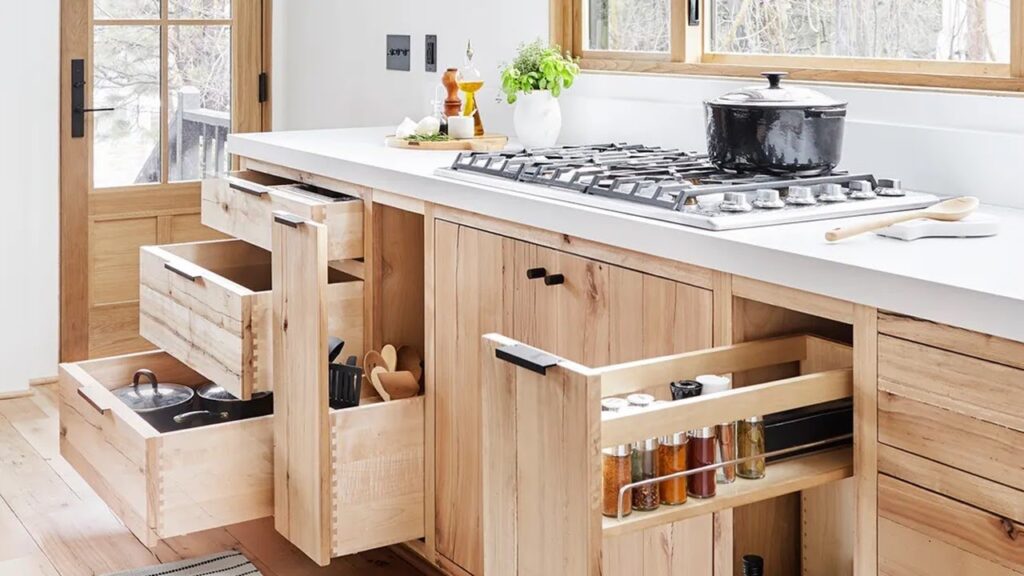A modern home thrives on harmony between design, comfort, and usability, and nowhere is this more evident than in the kitchen. Today’s homeowners expect kitchen layouts that not only look stunning but also enhance daily living through seamless organization and flow. A functional kitchen must support both casual routines and elaborate entertaining, blending aesthetic charm with purposeful design. Modern architects and interior designers now focus on kitchen zones that separate prep, cooking, and cleanup areas while maintaining connectivity. This approach creates balance, allowing homeowners to cook, converse, and move freely without clutter or disruption.
Kitchens have evolved far beyond traditional spaces for meal preparation; they are now the heart of the home, where families gather, guests mingle, and creativity thrives. Therefore, designing kitchen layouts requires more than simple placement of cabinets or appliances. It demands an understanding of lifestyle patterns, space usage, and visual cohesion. The best layouts adapt to every homeowner’s unique needs, whether it’s a compact space that maximizes storage or an expansive open-plan design that merges dining and cooking areas. Modern kitchen design is not about trends—it’s about timeless functionality crafted for real life.
Exploring Popular Kitchen Layout Designs
Each type of kitchen layout carries its distinct advantages, reflecting how space can adapt to diverse lifestyles. Among the most popular kitchen layouts are the L-shaped, U-shaped, galley, and island configurations, all designed to improve functionality and workflow. The L-shaped layout, for example, maximizes corner space while keeping essential zones—cooking, cleaning, and storage—within comfortable reach. It’s an ideal choice for medium-sized homes, promoting openness and flexibility without overcrowding the area.
The U-shaped kitchen layout offers superior efficiency for larger spaces. With three connected walls of counters and cabinets, it surrounds the cook, allowing easy access to all areas. It’s particularly loved by homeowners who prefer to cook elaborate meals or entertain frequently. The galley kitchen layout, on the other hand, is perfect for narrower spaces. Inspired by ship designs, it features parallel countertops and smart storage options, ensuring that no inch goes unused. This setup enhances workflow by keeping appliances close, minimizing unnecessary movement during cooking.
Meanwhile, the kitchen island layout is celebrated for its versatility. The central island can serve as a prep area, casual dining space, or even additional storage. In open-concept homes, it creates a natural transition between the kitchen and living areas, fostering communication and togetherness. Designers often combine islands with L-shaped or U-shaped kitchen layouts to achieve both beauty and practicality. The island also offers an ideal spot for creative lighting designs, elevating ambiance while highlighting craftsmanship.
The Role of Customization in Kitchen Design
Customization transforms standard kitchen layouts into deeply personal spaces that reflect a homeowner’s values and aesthetics. Unlike pre-built designs, custom kitchens allow for tailored cabinetry, bespoke materials, and individually selected finishes that complement the overall home architecture. Customization ensures that every design decision aligns with functionality—whether it’s the placement of an oven for convenience or the inclusion of pull-out storage for efficiency.
Custom kitchens are also an opportunity to incorporate innovative technologies and sustainable materials. Soft-close drawers, energy-efficient appliances, and eco-friendly finishes contribute to a more responsible yet luxurious living experience. Many designers recommend integrating natural light through skylights or large windows to enhance energy efficiency and atmosphere. Open shelving and glass-front cabinets offer elegance while maintaining accessibility.
This degree of personalization extends beyond aesthetics. When working with professionals like home general contractors Ontario, homeowners gain access to specialized expertise that combines design innovation with practical construction knowledge. Contractors play a vital role in ensuring that customized kitchen layouts are not only visually stunning but structurally sound and code-compliant. Their experience with material selection, space optimization, and precise installation helps bridge the gap between design vision and tangible results.
Enhancing Functionality through Design Efficiency
A functional kitchen is not merely a visual statement—it’s a study in efficiency, proportion, and flow. Good kitchen layouts are defined by how effectively they support movement between key zones: preparation, cooking, and cleaning. This principle, often referred to as the “kitchen work triangle,” ensures the sink, stove, and refrigerator are positioned for optimal accessibility. When properly implemented, this layout minimizes unnecessary steps and maximizes productivity, creating an effortless rhythm for daily use.
However, modern design trends have expanded beyond the traditional triangle, embracing multiple “work zones” instead. Larger homes often feature secondary prep areas, beverage stations, or baking zones to accommodate different tasks simultaneously. This approach enhances usability, especially for families who cook together or entertain frequently. Designers also emphasize ergonomic considerations—placing drawers at comfortable heights, using deep pull-outs for pots, and installing under-cabinet lighting for clarity during food preparation.
Spatial harmony plays a critical role in enhancing functionality. Proper spacing between countertops, adequate storage solutions, and strategically placed appliances help maintain order and cleanliness. Even in compact kitchens, thoughtful planning can prevent clutter. Innovative solutions such as corner drawers, sliding pantries, and integrated spice racks make small spaces feel expansive and organized. Open shelving, though stylish, works best when balanced with concealed storage to maintain a polished look.
Creating a Timeless and Cohesive Aesthetic
A truly successful kitchen design endures the test of time by balancing modern innovation with classic appeal. Designers emphasize that timeless kitchen layouts avoid fleeting trends and instead focus on proportion, material quality, and natural beauty. The secret lies in creating visual continuity—where colors, textures, and finishes complement each other across surfaces and cabinetry. Neutrals like white, beige, or gray remain enduring favorites, enhanced by warm metallic accents and natural wood tones.
Timeless kitchens often rely on simplicity and craftsmanship. Clean lines, uncluttered countertops, and carefully chosen materials create a calm and welcoming environment. While it’s tempting to chase current styles, restraint ensures longevity. For instance, a marble backsplash or quartz countertop provides understated luxury without overwhelming the space. Stainless steel appliances, paired with subtle matte finishes, maintain a sleek yet versatile look adaptable to future trends.
Beyond materials, the essence of timelessness lies in functionality that supports evolving lifestyles. As families grow or habits change, adaptable designs—such as movable islands or modular storage—allow flexibility without renovation. Integrating smart technologies discreetly also keeps the kitchen forward-thinking. Touchless faucets, app-controlled lighting, and energy-efficient appliances blend innovation with sophistication, reflecting how modern luxury is as much about comfort as it is about style.



